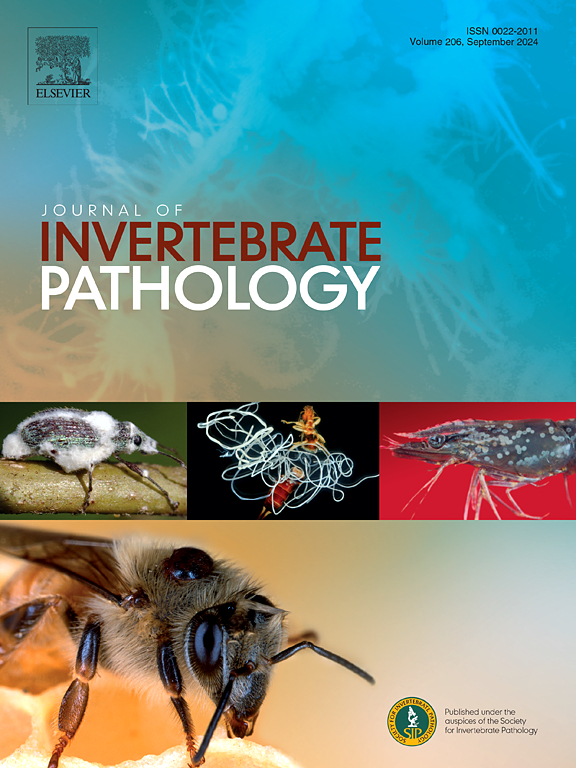小孢子虫或变形虫:基因组/蛋白质组学支持植根于分类学变化的复杂社会经济问题
IF 2.4
3区 生物学
Q1 ZOOLOGY
引用次数: 0
摘要
微孢子虫是可以感染无脊椎动物的致病生物。在养蜂业中,有两种重要的微孢子虫是小孢子虫(=Nosema) ceranae和apis。由于分子系统和社会经济原因,围绕这些物种的属分配的分类学一直存在激烈的争论。我们通过508个基因连接的蛋白质系统发育和277个基因连接的核苷酸系统发育为这一争论提供了更新,以表明这些寄生虫与vairrimorpha属及其模式种vairrimorpha necatrix具有很强的系统发育定位。尽管如此,我们建议术语“鼻虫病”,“鼻虫病”和“鼻虫病”应该仍然可以在养蜂中使用,并以V. ceranae和V. apis所在的Nosematidae命名,而不是以前的属分配:Nosema。本文章由计算机程序翻译,如有差异,请以英文原文为准。

Nosema or Vairimorpha: Genomic/proteomic support to a complex socio-economic issue rooted in taxonomic change
Microsporidia are disease-causing organisms that can infect invertebrate species. In apiculture, two microsporidians of importance are Vairimorpha (=Nosema) ceranae and Vairimorpha (=Nosema) apis. The taxonomy surrounding the genus assignment of these species has been heavily debated, due to molecular systematic and socio-economic reasons. We provide an update to this debate by developing a 508-gene concatenated protein phylogeny, and a 277-gene concatenated nucleotide phylogeny, to show that these parasites show strong phylogenetic positioning with the Vairimorpha genus and its type species Vairimorpha necatrix. Despite this assignment, we suggest that the terms ‘nosema-disease’, ‘nosemosis’ and ‘nosematosis’ should still be viable for use within apiculture, and be named after the family Nosematidae in which V. ceranae and V. apis sit, instead of the previous genus assignment: Nosema.
求助全文
通过发布文献求助,成功后即可免费获取论文全文。
去求助
来源期刊
CiteScore
6.10
自引率
5.90%
发文量
94
审稿时长
1 months
期刊介绍:
The Journal of Invertebrate Pathology presents original research articles and notes on the induction and pathogenesis of diseases of invertebrates, including the suppression of diseases in beneficial species, and the use of diseases in controlling undesirable species. In addition, the journal publishes the results of physiological, morphological, genetic, immunological and ecological studies as related to the etiologic agents of diseases of invertebrates.
The Journal of Invertebrate Pathology is the adopted journal of the Society for Invertebrate Pathology, and is available to SIP members at a special reduced price.

 求助内容:
求助内容: 应助结果提醒方式:
应助结果提醒方式:


